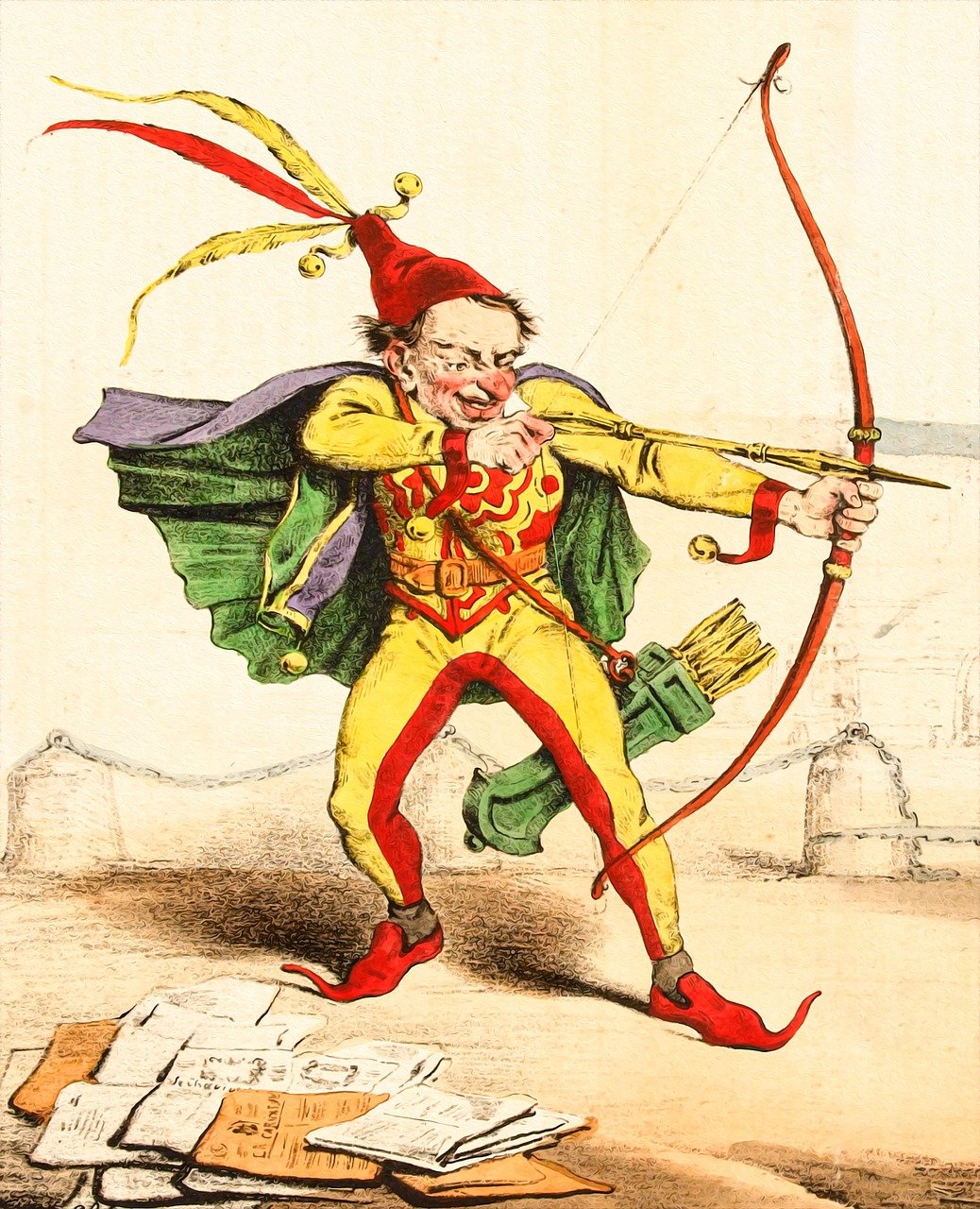Painful stories happen to all of us. A marriage or relationship goes sour. A job…

The other four-letter word
We usually think of four-letter words as the ones bleeped on network TV. This other four-letter word is not one of those. It’s fawn — which probably brings to mind a baby deer or the action of flattering or fawning over someone. But did you know that fawn is also one of the fear responses, like fight, flight, and freeze? And a driver of chronic anxiety? Meanwhile, we don’t always realize how fawning shows up in our lives or how it blocks our path to experiencing genuine authenticity and joy. Becoming aware of this can help us make different choices that lead to different results.
When and why we fawn
What exactly is fawning? As a fear response, it’s the action of becoming compliant to prevent further danger or injury. For example, agreeing with the demands of an abuser to avoid being physically or verbally assaulted. Like the others, it’s a survival strategy.
But it can also evolve into more of a preventive approach — anticipating a potentially dangerous situation rather than reacting to a real threat. This might manifest as “walking on eggshells” or always trying to please a parent, spouse, or boss to prevent an attack. Over time, we become finely attuned to the needs and desires of others at the expense of ourselves. AKA, the disease to please.
Like the other fear responses, fawning stems from childhood trauma. “Children go into a fawn-like response to attempt to avoid the abuse…they preemptively attempt to appease the abuser by agreeing, answering what they know the parent wants to hear, or by ignoring their personal feelings and desires.”
If we don’t resolve this, we tend to repeat the pattern as adults, attracting people who are controlling, self-centered, and demand our full attention. Because we live in a state of high alert, we can suffer with chronic anxiety, insomnia, an inability to focus, exhaustion, and other issues.
All scars need healing
It’s important to remember that abuse isn’t necessarily physical or sexual. In fact, emotional scars can have an enormous impact on us. But because we can’t see them or may not have recognized the behavior as abuse at the time — after all, we were kids — we may brush them under the rug.
That’s a big mistake. Bullying, teasing, shaming, abandoning, ignoring, being rejected and other emotionally destructive behaviors can scar us for life. In fact, one traumatic experience during childhood can trigger a lifetime of maladaptive behavior — like fawning.
The brain’s primary role is to survive. But as children, we don’t have many options to protect ourselves. We can’t fight back or run. Sometimes even ‘freeze’ is met with further abuse or punishment. So, we may choose to fawn, even if it’s a fool’s game because we can never predict or control another’s behavior.
As adults, this conditioning can prevent us from setting healthy boundaries, saying no, speaking up, or sharing our authentic selves with others. This is explained beautifully in the book, What Happened to You, co-authored by Dr. Bruce Perry and Oprah Winfrey. Here’s an interview with Dr. Perry on this topic.
Can’t fight the feeling
Once embedded, it can be tough to kick this disease to please. For one thing, fawning over people often earns praise, acceptance, preferential treatment, protection, and other sought-after rewards. That praise triggers a dopamine release in our brains, creating the same feeling as falling in love or eating ice cream — both addictive pleasures. Plus, after years of practice, fawning and pleasing behaviors can become second nature.
Consider how social media influencers work: When people ‘like’ them, their value goes up. When they don’t, it tanks. It’s all about focusing on the desires of others to accumulate likes and followers — because “giving the public what they want” comes with big rewards, like money, power, and fame. Maybe even a Netflix show. Talk about a dopamine boost!
But it makes one wonder…who’s really influencing who?
Flattery will get you nowhere
After years of focusing on the needs and desires of parents, teachers, peers, bosses, we can begin to feel like emotional zombies. Empty inside with no authentic needs or desires of our own. Without a subject to ‘feed’ on and flatter, we can feel like we’ve lost our purpose for living.
This often bubbles up when a relationship ends, we become empty nesters, or retire. We may feel stuck or unable to move on to the next stage. Yet this can be a wonderful time to explore new horizons or rekindle old flames. Not the romantic kind, but the burning desires that once filled us with joy.
If we could just remember what those were…
Do a little digging
Fortunately, we are not empty inside. We just need to do a little digging.
First, we need to understand and challenge the conditioning that made us believe that our needs don’t matter. This may take a little digging into our past experiences. Using a journal to write about them or talking to a counselor or coach can help us identify and process these experiences. And reading books like the one mentioned above.
By doing so, we begin to recognize and release ourselves from this web of lies. This is not a search for blame. It’s about unearthing and reconnecting with our own truth and healing our wounds — also known as ‘post-traumatic wisdom.’ We all have the right to that.
This can be the first step towards remembering and rekindling those ‘old flames.’
Rekindle an old flame
After years of being consumed by the other four-letter word, we may not have a clue about what WE feel or what WE desire from life. As Jay Shetty writes in Think like a Monk, “When we tune out the opinions, expectations, and obligations of the world around us, we begin to hear ourselves.” We can begin by grabbing a journal and some quiet time.
Write at the top of a page: What did I love to do as a child when I wasn’t trying to please or impress anyone? Who was I before others told me how I should behave and what I should like?
This is a great exercise to do first thing in the morning or right after meditating, when we feel most relaxed, open, and unrestrained by the judgements of others.
Looking at pictures of ourselves as babies and small children can also help jog our memories. Or try what Einstein and other geniuses famously did to unearth deeper wisdom and foster creative ideas.
Snooze but don’t lose
The “hypnogogic nap” as it’s called today is another way to cultivate creative brainstorming.
With these questions in mind, take a nap while sitting in a chair and holding a key or spoon with a plate beneath. As we nod off, the item falls and hits the plate. The clatter wakes us up before reaching stage 2 sleep, which is when the mind is in a state of free-flowing, enhanced creativity.
Write down or sketch whatever comes to mind, no matter how strange it sounds. It may make no sense now, but the mind will continue to percolate on it. We might be driving to work or riding a bike and have an ‘aha’ moment sparked by our questions.
Carve a new pathway
Old habits are hard to break. To let go of the other four-letter word and other trauma-induced behaviors, we must feel safe enough to do so. Some of us may need to make some changes to create that safe space. We also can’t expect positive reactions from those who benefit from our disease to please.
I’ve been untangling myself from this web for years and certain relationships didn’t survive. Yet those that did continue to grow and are so much richer and real and meaningful. I also rekindled an old flame: Writing. At the start of my journey, I realized I’d been estranged from my writing voice for fifteen years. We can’t express ourselves authentically when we don’t feel safe in the world. The first time I read a piece to my creative writing group, I nearly had a panic attack. But I breathed my way through it. And I kept writing.
We may never quite shake the fear responses created by childhood trauma. It changes our brain’s neural pathways, creating a habitual pattern of self-protection. Fortunately, at any age we can carve out new pathways through the magic of neuroplasticity. Each time we set a boundary or express a need, no matter how small, we weaken the fawning instinct and strengthen the path to increased authenticity and joy — and a well-deserved dopamine rush.
Want more Good Vibrations?
I’m a holistic life coach who specializes in expressive writing to nurture healing, insight, and creativity. Check out more inspirational articles at my blog, Good Vibrations. For more information about life coaching, visit my website at www.manifestwithmargrita.com. Or email me at CoachMargrita@gmail.com. I invite you to follow me on Instagram, Facebook, and LinkedIn, too!



